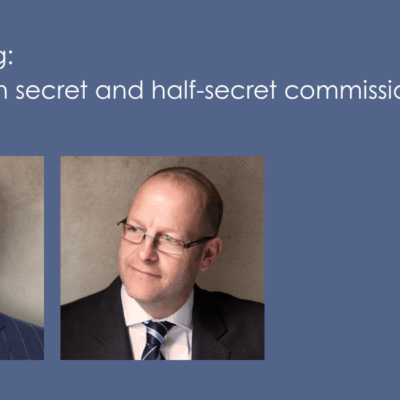Most of us have heard by now of the new Disclosure Pilot (“the Pilot”) which came into force on 1 January 2019 and will continue for two years. I had the pleasure of appearing for a party in the first ever hearing under the Pilot, a CCMC on 2 January 2019, in relation to a disputed off-plan sale of a number of developments.
The Pilot is designed to promote timely and more proportionate disclosure and applies to all cases in the Business and Property Courts, regardless of when they started (see para 1.2 of CPR PD51U).
There seems, however, to be some confusion as to whether the Pilot applies to cases in which disclosure orders had been made prior to the Pilot entering into force, as opposed to cases which were simply commenced before then. The prevailing view had been that it did not, based on the following passages from PD51U:
“The pilot shall not disturb an order for disclosure made before [1 January 2019]” (para 1.3 of PD51U)” and
“The pilot does not apply to any proceedings where a disclosure order had been made before it came into force unless that order is set aside or varied” (commentary at CPR Part 51.2.10).
The guidance in 51.2.10 seems quite clear but, in a recent judgment in UTB LLC v Sheffield United & Others [2019] EWHC 914 (Ch), the Chancellor, Lord Justice Vos, clarified that it was wrong:
“The Pilot was deliberately put in place without transitional provisions so that it would apply to all existing proceedings (apart from those specifically excluded) even where an initial disclosure order had been made. It seems to me that the note [at Part 51.2.10] is a misunderstanding of paragraph 1.3 of the Pilot … Plainly, it is one thing to say that a pre-existing order will not be disturbed by the commencement of the Pilot, and quite another to say that the Pilot is not applicable to any proceedings where a disclosure order has already been made. Only the first is correct.
”Somewhat ominously, the Chancellor then emphasised that parties will have to give detailed thought to the new rules under the Pilot and specifically to the way in which these rules would affect any application for extended disclosure. My experience echoes this warning, as, in the case I mentioned above, the other side has been sent away by the court a few times so far by reason of non-compliance with the Pilot. Each time the court provided more guidance and emphasised the need to comply with the Pilot before the case could be progressed.
In respect of further applications for disclosure under the Pilot in cases where disclosure had been ordered pre-January 2019, the Chancellor said that courts would interpret the Pilot in a way that makes it work effectively.
To end on a more positive note, below is a quick reminder of the main disclosure stages under the Pilot, leading up to a disclosure order at the first CMC:
- There are 5 models of disclosure under the Pilot, named from A to E. Model A is “no order for disclosure”, Model B is “limited disclosure”, Model C is “request-led search-based disclosure”, Model D is “narrow search-based disclosure” and Model E is “wide search-based disclosure”.
- Initially, unless agreed otherwise or too burdensome, parties must provide the key documents they rely on with their pleadings, similar to disclosure in arbitrations. This is called “Initial Disclosure” – if no disclosure is ordered after this (as to which, see below), this corresponds to Model A;
- If a party wants disclosure beyond the Initial Disclosure (which they would usually), they need to fill in a number of prescribed forms and engage with the other side on them within prescribed time limits:
(i) Within 28 days of the closure of statements of case, each party must state whether or not it wants “Extended Disclosure” (in order words any model of disclosure other than Model A);
(ii) If one or more parties want Extended Disclosure, the claimant must prepare and serve a draft list of issues for disclosure, within 42 days of the closure of statements of case. This list must be in the “Section 1A” form, which is provided in 51UPD.28. It is worth noting that this form has a typographical error in that it should say “to be completed by defendant [rather than “claimant”] in the penultimate column;
(iii) Form 1A requires the claimant to identify the issues in the case and suggest a model of disclosure for each issue – for example, in a misrepresentation claim, if a party wants disclosure of the e-mails containing the representations, the issue might be phrased as “the wording of the alleged representations” and model C may be suggested for disclosure under this issue;
(iv) The defendant must respond with comments in the relevant columns of form 1A within 14 days after service of the list;
(v) The parties then must seek to discuss and agree the draft list of issues and the model for each;
(vi) Any party proposing model C for any issue must complete, within 28 days from when the defendant responded to form 1A, the “Section 1B” form, which is provided at 51UPD.30;
(vii) Form 1B is meant to provide a shopping list of documents or categories of documents sought under each issue;
(viii) No later than 14 days before the first CMC, the parties must fill in the “data mapping” questionnaire in the “Section 2” form, which is provided at 51UPD.32;
(ix) No later than 5 days before the first CMC, the claimant must file a single joint Disclosure Review Document (“DRD”), which is formed of sections 1A, 1B and 2 put together.
(x) As soon as practicable thereafter and in any event before the first CMC, the parties must each file a Certificate of Compliance in the from at 51UPD.34, which contains a statement of truth in relation to the DRD and a confirmation that the parties are aware of their duties under the Pilot.




![Delivery matters: Gaster v. HMRC [2025] EWHC 328](https://threestone.law/wp-content/uploads/2024/01/Hallett_Katherine-400x400.jpg)
